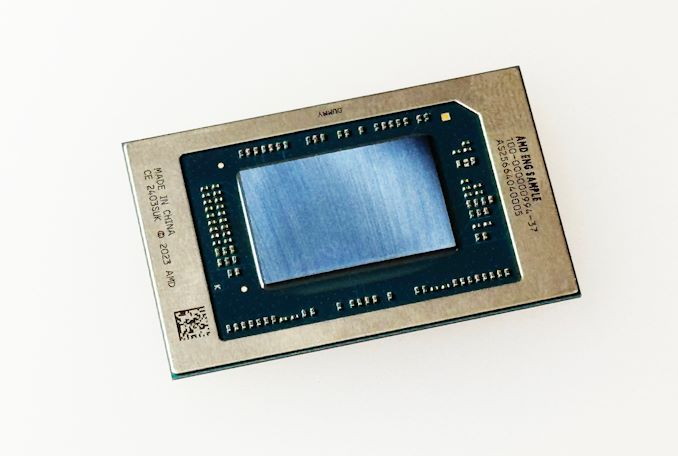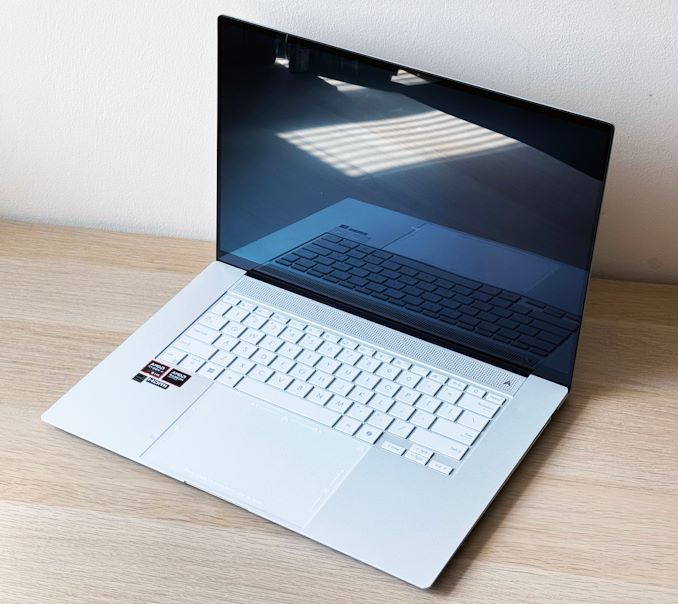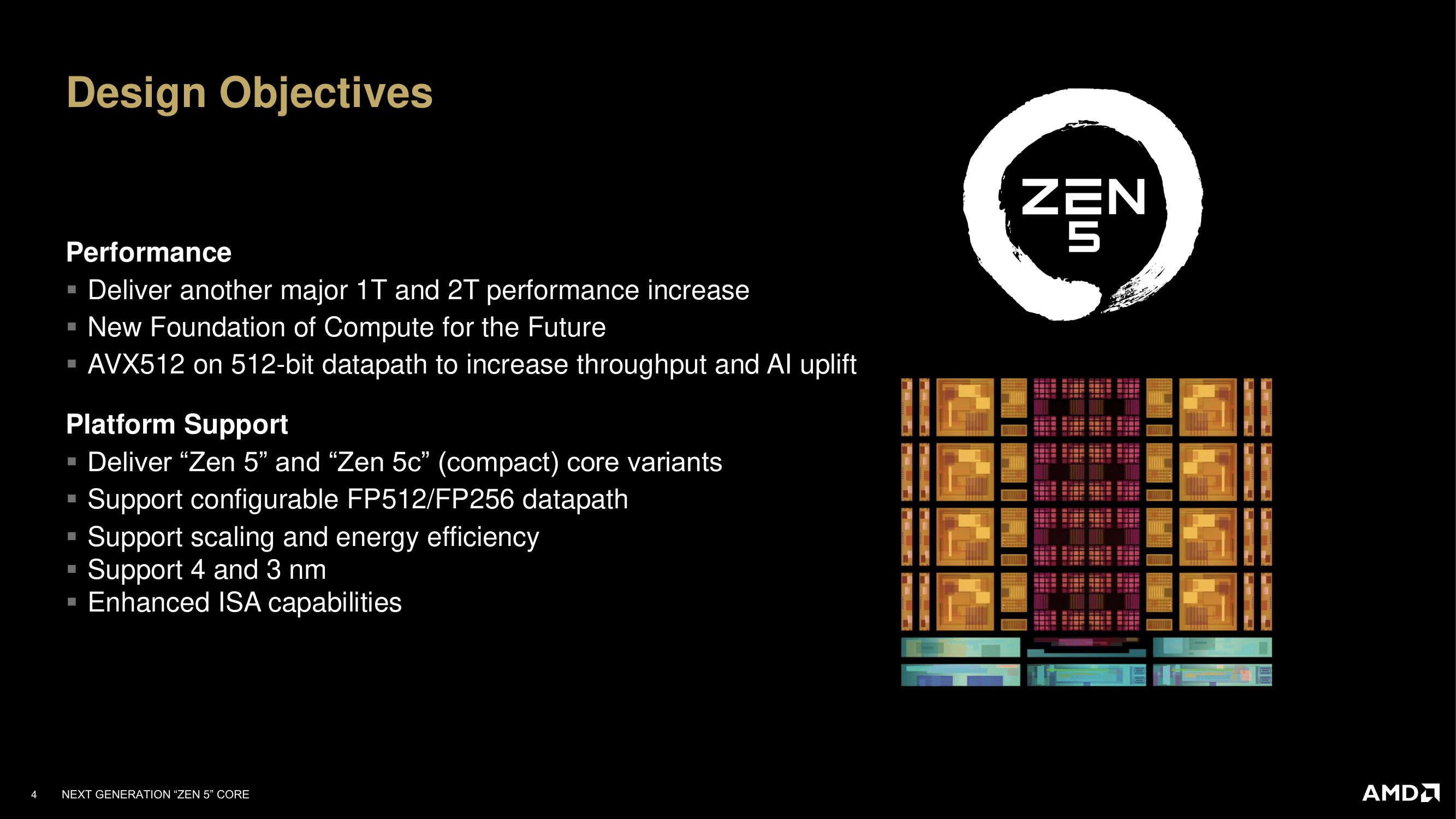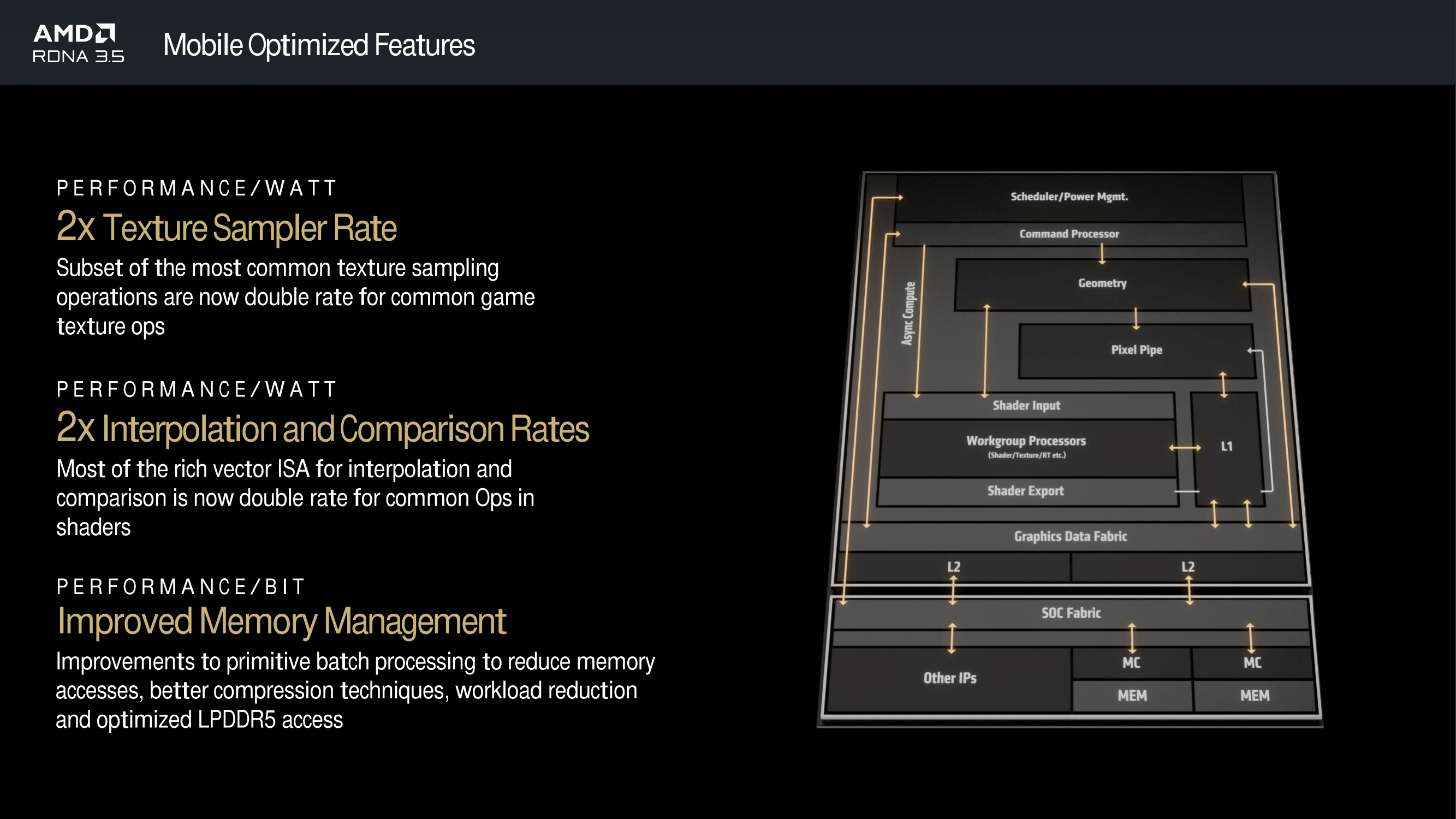During the opening keynote delivered by AMD CEO Dr. Lisa Su at Computex 2024, AMD finally lifted the lid on their highly-anticipated Zen 5 microarchitecture. The backbone for the next couple of years of everything CPU at AMD, the company unveiled their plans to bring Zen 5 in the consumer market, announcing both their next-generation mobile and desktop products at the same time. With a tight schedule that will see both platforms launch within weeks of each other, today AMD is taking their first step with the launch of the Ryzen AI 300 series – codenamed Strix Point – their new Zen 5-powered mobile SoC.
The latest and greatest from AMD, the Strix Point brings significant architectural improvements across AMD’s entire IP portfolio. Headlining the chip, of course, is the company’s new Zen 5 CPU microarchitecture, which is taking multiple steps to improve on CPU performance without the benefits of big clockspeed gains. And reflecting the industry’s current heavy emphasis on AI performance, Strix Point also includes the latest XDNA 2-based NPU, which boasts up to 50 TOPS of performance. Other improvements include an upgraded integrated graphics processor, with AMD moving to the RDNA 3.5 graphics architecture.
The architectural updates in Strix Point are also seeing AMD opt for a heterogeneous CPU design from the very start, incorporating both performance and efficiency cores as a means of offering better overall performance in power-constrained devices. AMD first introduced their compact Zen cores in the middle of the Zen 4 generation, and while they made it into products such as AMD’s small-die Phoenix 2 platform, this is the first time AMD’s flagship mobile silicon has included them as well. And while this change is going to be transparent from a user perspective, under the hood it represents an important improvement in CPU design. As a result, all Ryzen AI 300 chips are going to include a mix of not only AMD’s (mostly) full-fat Zen 5 CPU cores, but also their compact Zen 5c cores, boosting the chips’ total CPU core counts and performance in multi-threaded situations.
For today’s launch, the AMD Ryzen AI 300 series will consist of just three SKUs: the flagship Ryzen AI 9 HX 375, with 12 CPU cores, as well as the Ryzen AI 9 HX 370 and Ryzen 9 365, with 12 and 10 cores respectively. All three SoCs combine both the regular Zen 5 core with the more compact Zen 5c cores to make up the CPU cluster, and are paired with a powerful Raden 890M/880M GPU, and a XDNA 2-based NPU.
As the successor to the Zen 4-based Phoenix/Hawk Point, the AMD Ryzen AI 300 series is targeting a diverse and active notebook market that has become the largest segment of the PC industry overall. And it is telling that, for the first time in the Zen era, AMD is launching their mobile chips first – if only by days – rather than their typical desktop-first launch. It’s both a reflection on how the PC industry has changed over the years, and how AMD has continued to iterate and improve upon its mobile chips; this is as close to mobile-first as the company has ever been.
Getting down to business, for our review of the Ryzen AI 300 series, we are taking a look at ASUS’s Zenbook S 16 (2024), a 16-inch laptop that’s equipped with AMD’s Ryzen AI 9 HX 370. The slightly more modest Ryzen features four Zen 5 CPU cores and 8 Zen 5c CPU cores, as well as AMD’s latest RDNA 3.5 Radeon 890M integrated graphics. Overall, the HX 370 has a configurable TDP of between 15 and 54 W, depending on the desired notebook configuration.
Fleshing out the rest of the Zenbook S 16, ASUS has equipped the laptop with a bevy of features and technologies fitting for a flagship Ryzen notebook. The centerpiece of the laptop is a Lumina OLED 16-inch display, with a resolution of up to 2880 x 1800 and a variable 120 Hz refresh rate. Meanwhile, inside the Zenbook S 16 is 32 GB of LPDDR5 memory and a 1 TB PCIe 4.0 NVMe SSD. And while this is a 16-inch class notebook, ASUS has still designed it with an emphasis on portability, leading to the Zenbook S 16 coming in at 1.1 cm thick, and weighing 1.5 kg. That petite design also means ASUS has configured the Ryzen AI 9 HX 370 chip inside rather conservatively: out of the box, the chip runs at a TDP of just 17 Watts.
AMD’s Strix Point SoC Architecture: A Quick Recap
Before we dive into our review of the ASUS Zenbook 16 S and AMD’s Ryzen 9 AI HX 370 mobile processor, we will quickly recap what’s new with the Strix Point SoC and AMD’s various processor architectures. Below is a list of our comprehensive and detailed commentary on Zen 5 and the rest of AMD’s 2024-2025 mobile platform:
Compared to the other PC SoC launches in the past several months, AMD has had a pretty short run-up to today’s launch of Strix Point. While Zen 5 has been on AMD’s long-term roadmap for years, the company only announced Strix Point and the associated Zen 5 CPU architecture in June, barely two months ago. So this launch has offered a refreshingly short waiting period before we got to see first-hand just what AMD’s latest platform can offer.
At the heart of the AMD Ryzen AI 300 series of SoCs (and Ryzen 9000, too) is AMD’s latest Zen 5 microarchitecture, which builds upon the success of Zen 4. Zen 5 brings a whole host of improvements to the underlying design compared to its predecessor. The latest chips also come with some minor manufacturing improvements as well, with AMD utilizing TSMC’s N4P (4 nm) node to fabricate the Strix Point monodie.
With a mix of full-fat Zen 5 and compact Zen 5c CPU cores, Strix Point has two core complexes (CCXs), one featuring the four Zen 5 cores and the other housing the eight smaller Zen 5c cores. According to AMD, the more compact Zen 5c cores are around 25% smaller than the regular Zen 5 cores, with varying levels of L3 cache.
The AMD Zen 5 microarchitecture is designed to offer higher IPC performance than Zen 4, with AMD claiming an average uplift of 16% over its predecessor for AMD’s highest-performance, full-fat Zen 5 core implementation. Zen 5 has been built with performance in mind but still maintains a strong focus on power efficiency, which is critical both in the mobile space and in AMD’s lucrative server markets. The Zen 5c cores are specifically geared to offer (nearly) the same instructions per clock (IPC) rate as the full-fat cores, but with a smaller overall footprint on the die.
Still, digging into the fine print you’ll find that the Zen 5 cores in Strix Point aren’t quite the whole enchilada from a performance perspective. AMD’s mobile chips are getting a third core type that is largely identical to the desktop core, but eschews the 512-bit (FP512) SIMD used for highly parallel operations. In lieu of that, both the big (Zen 5) and little (Zen 5c) cores on Strix point get a 256-bit (FP256) SIMD. So there are some small but meaningful differences between the desktop and mobile chips.
AMD’s Strix Point has also been given an improved integrated graphics system, with Ryzen AI 300 using the latest RDNA 3.5 architecture. This newest iteration of AMD’s venerable RDNA graphics architecture is a relatively minor revision overall versus the RDNA 3 graphics used in Phoenix, lacking any new features, but implementing further optimizations to improve energy efficiency, a critical element for the mobile market.
The net result is that there has been a lot of work going on behind the scenes to optimize the plumbing of the core architecture. Improving memory management is not especially sexy from a feature point of view, for example, but going to memory is an incredibly expensive action in terms of power consumption. So these kinds of optimizations can pay off significantly in GPU and mixed CPU/GPU workloads. Given that laptops are power-constrained environments, those power savings can then be invested in improving overall performance, such as by allowing for higher sustained clock speeds.
RDNA 3.5 is a bit unique in this respect, as it’s the first time an AMD SoC has received an architecturally distinct GPU of its own, rather than just a down-ported version of AMD’s discrete GPU architecture. Ultimately, AMD’s improvements here will feed back into future architectures, so this isn’t any kind of permanent bifurcation, but it’s another example of how AMD is dedicating time and resources to better optimize their mobile hardware.
The Ryzen AI 300 Family
Although we are focusing on the AMD Ryzen AI 9 HX 370 in this review, AMD has another two Ryzen AI 300 series (Strix Point) processors. All three Ryzen AI 300 series SoCs amalgamate Zen 5 and Zen 5c cores onto the same die, while two of the chips are branded under AMD’s high-performance HX series.
| AMD Ryzen AI 300 Series Mobile Processors (Zen 5/Strix Point) |
|||||||
| AnandTech | Cores | Base Freq |
Turbo Frequency |
L3 Cache |
Graphics | NPU | TDP |
| Ryzen AI 9 HX 375 | 4 x Zen 5 8 x Zen 5c (24 Threads) |
2.0GHz | Zen5: 5.1GHz Zen 5c: 3.3GHz |
24 MB | Radeon 890M 16 CU |
XDNA 2 (55 TOPS) |
15-54W |
| Ryzen AI 9 HX 370 | 4x Zen 5 8x Zen5c (24 Threads) |
2.0GHz | Zen5: 5.1GHz Zen 5c: 3.3GHz |
24 MB | Radeon 890M 16 CU |
XDNA 2 (50 TOPS) |
15-54W |
| Ryzen AI 9 365 | 4x Zen 5 6x Zen5c (20 Threads) |
2.0GHz | Zen 5: 5.0GHz Zen 5c: 3.3 GHz |
24 MB | Radeon 880M 12 CU |
XDNA 2 (50 TOPS) |
15-54W |
What’s notable right off the bat here is that AMD has condensed their chip stack significantly versus the Ryzen Mobile 7000/8000 generations. Whereas AMD previously had separate chip lines for the 15-30 Watt (U-series) and 35-54 Watt (HS-series), the Ryzen AI 300 series compresses this down to a single line of chips that can be configured to run anywhere between 15 Watts and 54 Watts – AMD’s complete TDP range for mainstream chips. Consequently, the chips can conceivably be placed in anything from an ultrabook up to a desktop replacement laptop. Meanwhile, the default TDP for all of these chips is 28 Watts, which has been an increasingly popular power point for thin & light laptops.
And since we last talked about the AMD Ryzen AI 300 series when we detailed the Zen 5 microarchitecture earlier in the month, AMD has snuck in a third SKU to the Ryzen AI 300 series: the Ryzen AI 9 HX 375. Almost, but not quite identical to the previously-announced Ryzen AI 9 HX 370 SKU, the HX 375 ships with a slightly faster NPU. At 55 TOPS, this NPU is 10% faster than the NPU found in the HX 370 (50 TOPS), and this marks the first time that we’ve seen any PC vendor (Qualcomm included) offer SKUs with different NPU configurations. It’s a small distinction to be sure, but it’s also a sign that NPUs are getting powerful enough that there’s room for some variation, rather than chip vendors having to ship the fastest configuration they can offer.
NPU matters aside, both the HX 375 and HX 370 feature a 12 CPU core configuration, with 4x Zen 5 and 8x Zen 5c cores. Both core types are capable of SMT, meaning that these chips can have up to 24 CPU threads in flight at once (ed: anyone remember when just 2 threads was a big deal?). And with their wide TDP ranges, they have an equally large clockspeed range, with a base frequency of 2.0GHz and a turbo frequency of up to 5.1 GHz. Both chips are also paired with Strix Point’s full integrated graphics configuration, the Radeon 890M with 16 graphics CUs.
The third and final SoC in the stack is the Ryzen AI 9 365, which is a 10 core part and consists of 4x Zen 5 cores and 6x Zen 5c cores. The Ryzen AI 9 365 can boost up to 5.0 GHz, and gets a slightly cut-down Radeon 880M integrated GPU, which runs with 12 CUs.
Otherwise, all three Ryzen AI 300 chips offer the same cache configuration: 24 MB of L3 cache, which is split as 16 MB on the Zen 5 CCX, and 8 MB on the Zen 5c CCX.
The ASUS Zenbook S 16 (2024) Notebook: A Closer Look
One of the first notebooks announced that would feature AMD’s Ryzen AI 300 series was the ASUS Zenbook S 16 (2024), which is a premium ultrathin 16-inch notebook with an impressive feature set. The ASUS Zenbook S 16 (UM5606WA) we received features a striking ‘Scandinavian white’ colored chassis, which uses ASUS’s own material for the build, which they are calling ‘Ceraluminum.’ ASUS explains it is a high-tech ceramic designed to be robust and light, with the Ceraluminum being an amalgamation of ceramic and aluminum








